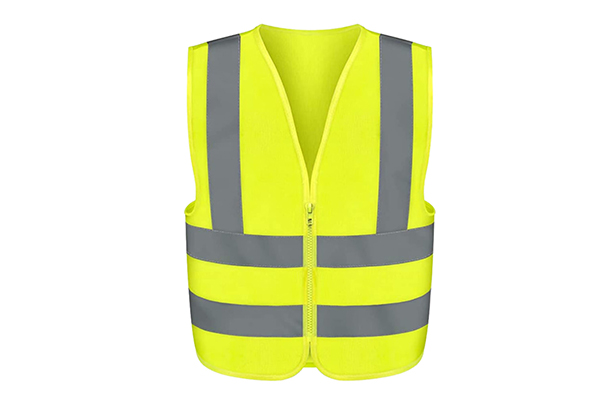Importance of Safety Vest in Construction
In the construction industry, safety is not just a regulation—it’s a responsibility. Among all personal protective equipment (PPE), the safety vest plays a vital role in preventing accidents and ensuring workers remain visible and secure on job sites. Whether working on highways, building sites, or in warehouses, safety vests are an essential part of every worker’s gear.

1. Enhancing Visibility for Worker Safety
The primary purpose of a safety vest is to make workers visible in all conditions. Construction sites are often busy and hazardous, with moving vehicles, heavy machinery, and poor lighting.
High-visibility safety vests, typically made in fluorescent yellow, orange, or lime green, ensure that workers can be easily seen from a distance. Reflective strips on the vest increase visibility during low-light conditions, such as early morning, evening, or night shifts.
By enhancing visibility, safety vests significantly reduce the risk of accidents caused by drivers or machine operators who might otherwise fail to notice workers in their surroundings.
2. Compliance with Safety Regulations
Wearing safety vests is not optional—it’s a requirement under international and local safety standards, such as ANSI/ISEA 107 or EN ISO 20471.
These standards classify safety vests into different types and classes based on their visibility level and usage scenario:
- Class 1: For workers in low-risk environments (e.g., warehouse staff).
- Class 2: For construction sites with moderate traffic or complex backgrounds.
- Class 3: For high-speed or high-risk environments, such as highway or roadwork projects.
More: Class 1, 2, and 3 Safety Vests: What’s the Difference?
Ensuring that your workers wear properly certified vests helps your company comply with safety laws, avoid penalties, and maintain a professional safety culture.
3. Identifying Roles and Improving Communication
Safety vests can also help distinguish roles on a construction site. Different colors or markings can represent different teams—such as engineers, safety officers, or general workers—making it easier to identify responsibilities and maintain efficient communication.
This simple color-coding system can prevent confusion during emergencies or inspections and helps maintain site organization.
4. Promoting a Safety Culture
When workers wear safety vests consistently, it promotes a strong safety-first culture within the organization. It sends a clear message that management values worker protection and adheres to safety protocols.
This, in turn, boosts employee confidence and morale—workers feel more secure and valued, which often leads to improved productivity and teamwork.
5. Cost-Effective Safety Measure
Compared to other PPE, safety vests are affordable yet highly effective in preventing accidents. A small investment in quality, certified vests can save lives and protect your business from costly accidents or downtime.
By equipping your workforce with reliable reflective vests, you ensure both protection and compliance without breaking the budget.
Conclusion
The importance of safety vests in construction cannot be overstated. They are simple yet powerful tools that enhance visibility, ensure compliance, and protect lives every day.
If you’re looking for durable and certified high-visibility safety vests, contact us about our range of products designed for all types of construction environments. Stay visible. Stay safe.
